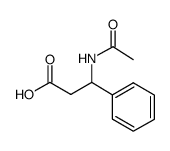Mutations in the cinnamate 4-hydroxylase gene impact metabolism, growth and development in Arabidopsis.
Anthony L Schilmiller, Jake Stout, Jing-Ke Weng, John Humphreys, Max O Ruegger, Clint Chapple
文献索引:Plant J. 60 , 771-782, (2009)
全文:HTML全文
摘要
The initial reactions of the phenylpropanoid pathway convert phenylalanine to p-coumaroyl CoA, a branch point metabolite from which many phenylpropanoids are made. Although the second enzyme of this pathway, cinnamic acid 4-hydroxylase (C4H), is well characterized, a mutant for the gene encoding this enzyme has not yet, to our knowledge, been identified, presumably because knock-out mutations in this gene would have severe phenotypes. This work describes the characterization of an allelic series of Arabidopsis reduced epidermal fluorescence 3 (ref3) mutants, each of which harbor mis-sense mutations in C4H (At2g30490). Heterologous expression of the mutant proteins in Escherichia coli yields enzymes that exhibit P420 spectra, indicative of mis-folded proteins, or have limited ability to bind substrate, indicating that the mutations we have identified affect protein stability and/or enzyme function. In agreement with the early position of C4H in phenylpropanoid metabolism, ref3 mutant plants accumulate decreased levels of several different classes of phenylpropanoid end-products, and exhibit reduced lignin deposition and altered lignin monomer content. Furthermore, these plants accumulate a novel hydroxycinnamic ester, cinnamoylmalate, which is not found in the wild type. The decreased C4H activity in ref3 also causes pleiotropic phenotypes, including dwarfism, male sterility and the development of swellings at branch junctions. Together, these observations indicate that C4H function is critical to the normal biochemistry and development of Arabidopsis.
相关化合物
| 结构式 | 名称/CAS号 | 分子式 | 全部文献 |
|---|---|---|---|
 |
3-乙酰氨基-3-苯基丙酸
CAS:40638-98-0 |
C11H13NO3 |
|
Biodegradation of high molecular weight lignin under sulfate...
2009-02-01 [Bioresour. Technol. 100 , 1622-1627, (2009)] |
|
RNAi-mediated suppression of p-coumaroyl-CoA 3'-hydroxylase ...
2008-03-18 [Proc. Natl. Acad. Sci. U. S. A. 105 , 4501-4506, (2008)] |
|
A simple method to determine trypsin and chymotrypsin inhibi...
2004-06-30 [J. Biochem. Biophys. Methods 59 , 241-251, (2004)] |
|
Ribosomal binding and dipeptide formation by misacylated tRN...
1988-09-20 [Biochemistry 27 , 7254-7262, (1988)] |
|
Chemotactic activity from rabbit peritoneal neutrophils. Lac...
1976-08-12 [Biochim. Biophys. Acta 445 , 112-117, (1976)] |